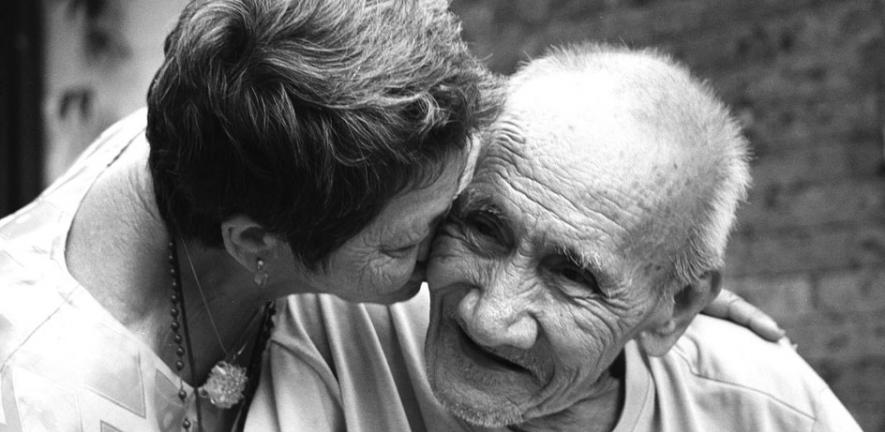
As life expectancy increases, what can historical analysis of longevity tell us about limits to the human lifespan?
As life expectancy increases, what can historical analysis of longevity tell us about limits to the human lifespan?
Historical demographic analysis has exposed a line of challenging enquiry: will life expectancy continue to rise, as predicted from the previous trends, or are we reaching a biologically determined ceiling?
Over the past 200 years, life expectancy at birth has doubled from around 40 years to over 80 years in countries like the UK. In some countries such as France, where 250 years ago life expectancy at birth was slightly over 25 years, life expectancy has increased by almost 55 years. Although these trends have been well documented, there remains much disagreement between biological scientists and demographers (who study the structure and dynamics of populations) about their meaning. The question is: can we use these trends to predict future developments in life expectancy?
A biological ceiling?
On one side of the debate are those who believe that under favourable conditions the typical human has a characteristic maximal lifespan and that we are now approaching the uppermost limits to life expectancy. The main argument in favour of this stance is the notion that increasing life expectancy is beyond the reach of Darwinian forces of natural selection because almost all mortality now occurs after the age of reproduction. A further argument for having reached an upper limit rests on the fact that the reduction in infant mortality rates over the centuries in many societies has already brought a huge increase to lifespan, and further improvements in medical care won’t now make such a significant impact on this age group.
However, each time a natural limit has been suggested, it has been exceeded. In the 1920s, eminent demographers thought that the maximal lifespan was a little under 65 years of age (life expectancy in the USA at the time was around 57 years). Distinguished analysts as late as 1990 declared that life expectancy would not exceed 85 years unless major breakthroughs were to occur in controlling the fundamental rate of ageing. This cap was surpassed by Japanese women in 1996, and a number of other countries have now joined Japan in passing this upper limit.
The historical perspective
Demographers who look at life expectancy trends over time, and give considerable weight to the findings from historical study, expect there to be continued improvements to life expectancy. Historical analysis undertaken collaboratively in the Department of Geography in Cambridge and at the Max Planck Institute for Demographic Research in Rostock, Germany, has focused on life expectancy by looking at records dating back to the 1840s in a large number of countries for which estimates can be made. These data have been used to chart trends over a period from 1840 to the present day.
In 1840, life expectancy was highest among Swedish women, who lived on average 45 years. Today, as mentioned earlier, the longest life expectancy is to be found among Japanese women, whose lives on average exceed 85 years. This improvement appears to have been steady, with an average increase in life expectancy of three months every year until the present day. Record male longevity has risen rather more slowly yet still shows the same linear rise, with Japanese men now holding the record for the longest male survivors at an average age of just over 78 years.
In England, female adult mortality has been estimated from Anglican parish registers and genealogies relating to the Peerage, which reveal an increase in adult survivorship that began as early as 1700. Interestingly, this rise was experienced by both high- and low-income members of society, suggesting that at least initially the process derived from health-related changes rather than from a rise in economic well-being.
Future longevity
Historical demographic analysis has exposed a line of challenging enquiry: will life expectancy continue to rise, as predicted from the previous trends, or are we reaching a biologically determined ceiling? It would be rash on the basis of the historical trends to promote the idea of the attainment of eternity among humans or even an untrammelled route to a life expectancy at birth of 100 years by 2060, as some enthusiasts have done. Nonetheless, it is certain that centenarians will soon become commonplace individuals in our midst.
A significant part of the improvement in average life expectancy, certainly before 1950, was achieved by improvements in survivorship among the youngest age group; behavioural changes associated with health enhancement, such as a reduction in smoking, will also have contributed in recent decades. However, looking to the future, a fundamental finding of the historical analysis is that there is no sign of a levelling off of rates of improvement at the oldest ages. In fact, these rates of improvement would appear to be rising rather than levelling. It is perhaps noteworthy that, following a sequence of years when they had to raise their maximum life expectancy repeatedly, the United Nations has at last abandoned the practice of imposing such limits in their population projections.
Implications
Forecasts of life expectancy are used in public and private decision-making to determine future pension benefits, healthcare and social services. Increases in life expectancy of just a few years can produce very large changes in the numbers of the old and particularly the very old. And a continued reduction in mortality among the oldest old suggests that longevity increases will be larger and population ageing will be more rapid than many high-income countries expect, which could have major implications for social security and medical care systems.
Perhaps one of the most significant implications of historical demographic analysis is that it has exposed the danger of believing that the expectation of life cannot rise much above its current uppermost level. As the so-called ‘baby boomer’ generation ages, longevity is becoming a highly significant debate. Whichever school of thought – those who believe the ceiling has been reached and those who do not – proves to be correct, the result will have enormous implications for how societies evolve, and manage their health and welfare issues, in the future.
For more information, please contact the author Professor Richard Smith (rms20@cam.ac.uk),who is Director of the Cambridge Group for the History of Population and Social Structure within the Department of Geography.
Life expectancy today
The average life expectancy from birth for men and women in the UK is currently 76.6 and 81.1 years, respectively. The world’s highest life expectancies can be found in Andorra, San Marino, Monaco and Japan; Japanese men and women live an average of 78.7 and 85.5 years, respectively. Africa has some of the world’s lowest life expectancies: Swaziland (37.6 years), Botswana (41.5 years) and Lesotho (41.5 years). Source: World Health Organization statistical information.
This work is licensed under a Creative Commons Licence. If you use this content on your site please link back to this page.





